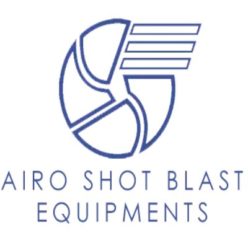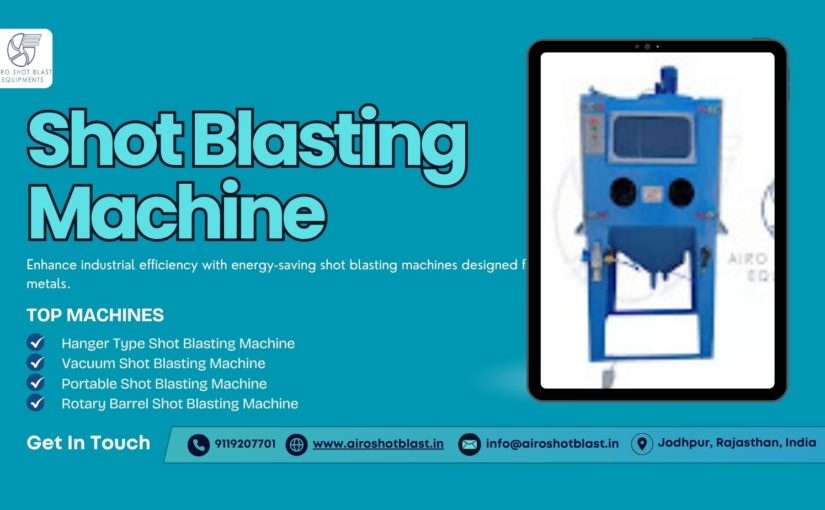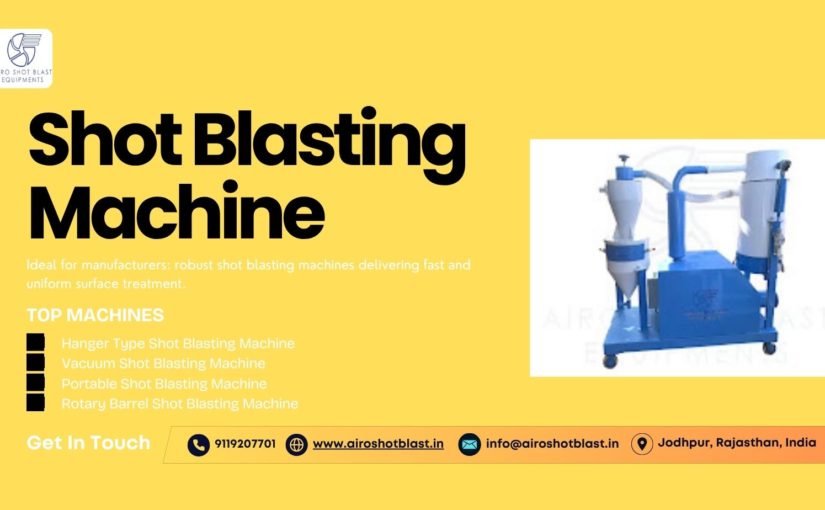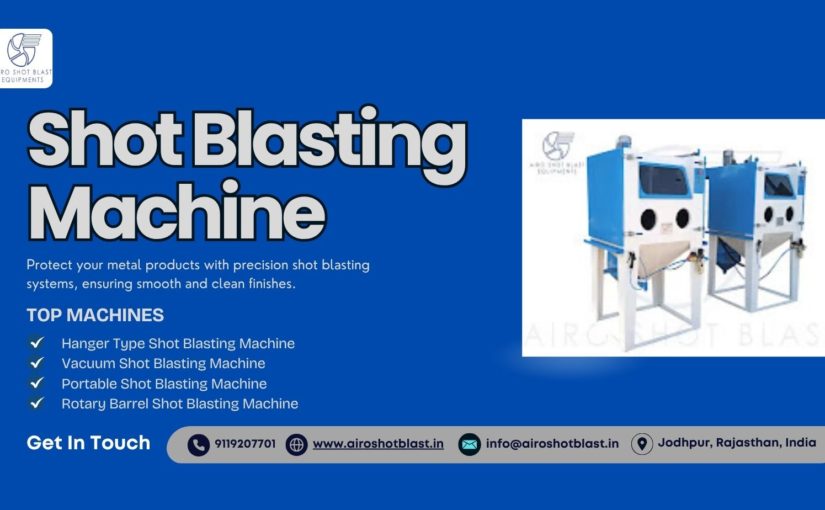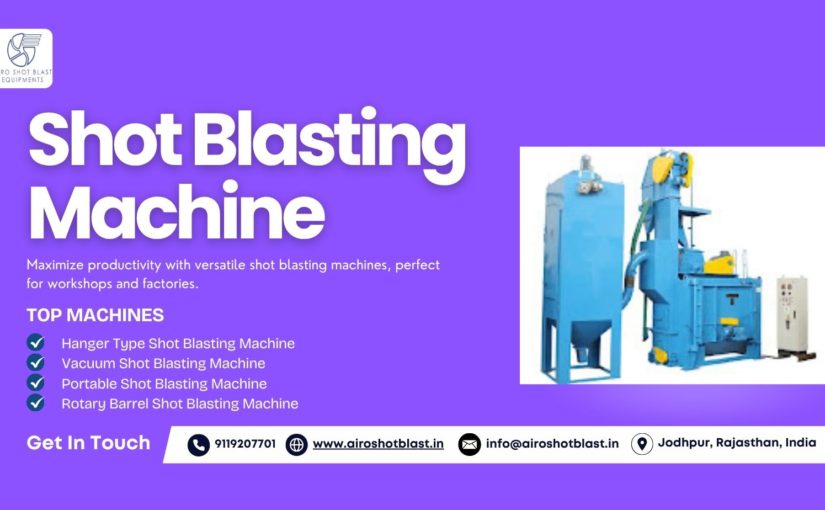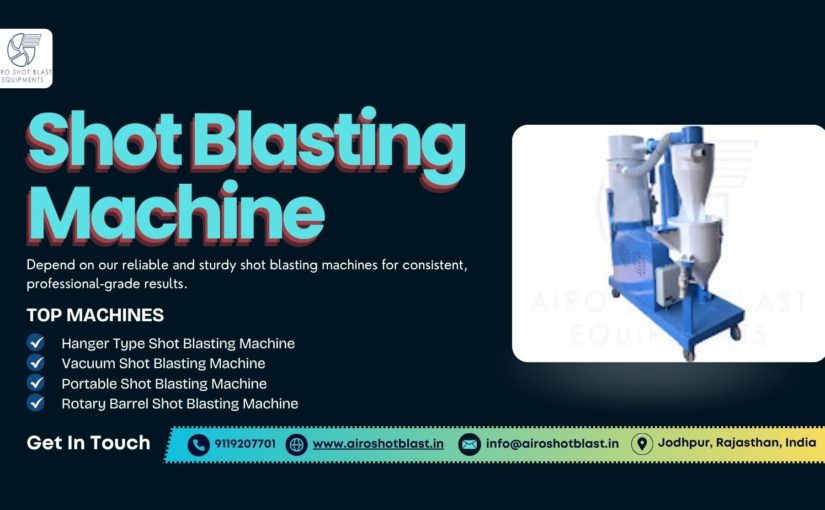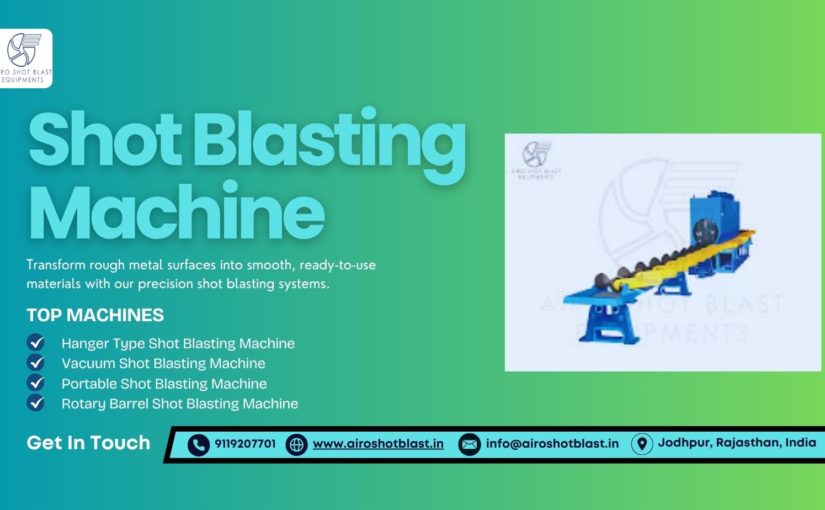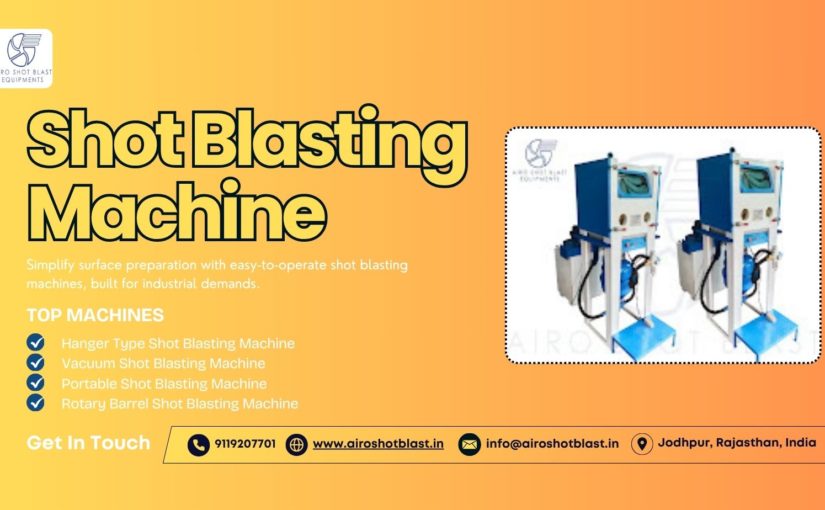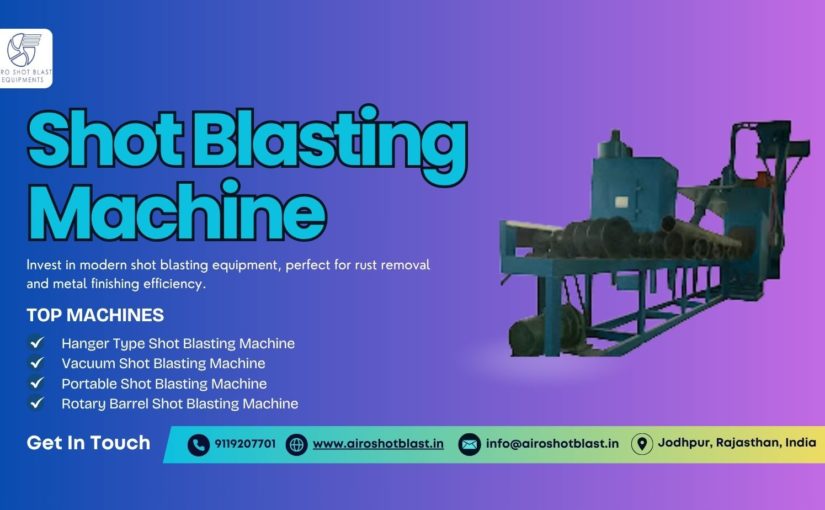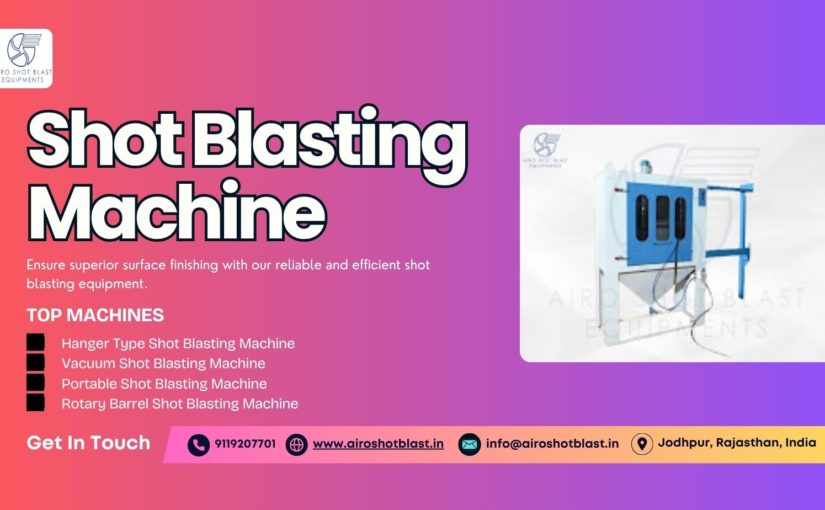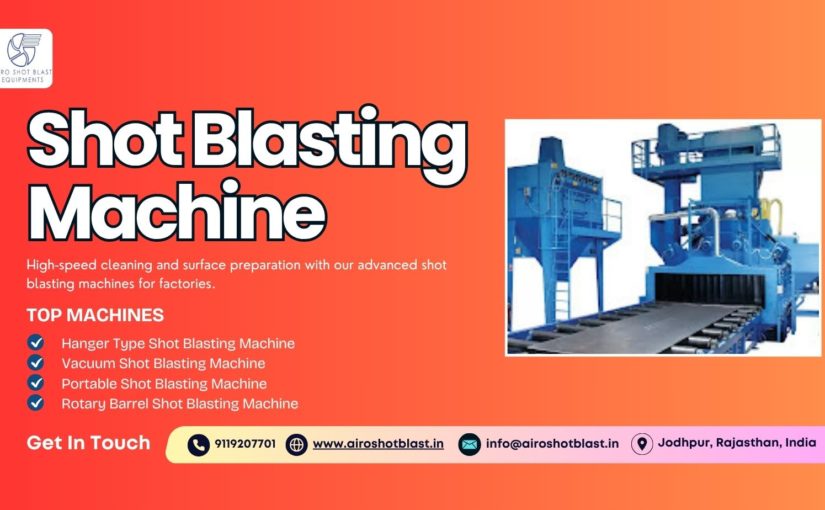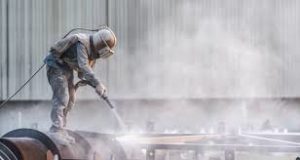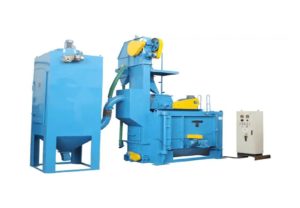Looking to buy your first shot blasting machine in India? This guide from Airo Shot Blast Equipments explains everything — from machine types and features to pricing, applications, and expert buying tips.
Introduction
Buying a shot blasting machine for the first time can feel a little overwhelming, can’t it? With so many options, specifications, and price points in the market, it’s easy to get lost. Whether you’re in manufacturing, automotive, shipbuilding, or construction, choosing the right blasting equipment is crucial to your operations’ success.
That’s exactly why we’ve put together this comprehensive guide — “Shot Blasting Machines in India: A Guide for First-Time Buyers.” Here, we’ll walk you through everything you need to know — from understanding how these machines work to comparing models, pricing factors, and maintenance tips.
By the end, you’ll know exactly what to look for and how to invest wisely in your first shot blasting machine.
What Is a Shot Blasting Machine?
Simply put, a shot blasting machine is a mechanical device used to clean, polish, or strengthen metal surfaces. It works by propelling abrasive media (like steel shots or grit) at high speed against a surface, removing impurities like rust, paint, and scale.
In industrial applications, this process:
- Prepares surfaces for painting or coating
- Increases the strength and durability of metal components
- Helps achieve uniform surface finishes
In India, these machines have become indispensable across sectors — especially as industries push for precision, productivity, and surface perfection.
Why Shot Blasting Is Important for Indian Industries
India’s booming manufacturing, automotive, construction, and shipbuilding sectors rely heavily on shot blasting. The process ensures that products meet quality and safety standards, especially in export-driven industries.
Some key benefits include:
- Improved Surface Adhesion: Perfect for coatings and paint applications.
- Extended Lifespan of Components: Removes stress points and corrosion.
- Cost Efficiency: Reduces manual labor and material wastage.
- Eco-Friendly Options: Modern systems come with dust collectors and recycling features.
So, if you’re planning to step up your production line — a shot blasting machine isn’t just an option; it’s a necessity.
Types of Shot Blasting Machines in India
Before making a purchase, it’s important to understand the various types available and what each one does best. Here’s a quick overview:
1. Portable Shot Blasting Machines
- Ideal for on-site surface cleaning like bridges, pipelines, or ship decks.
- Compact, mobile, and easy to operate.
- Common models: P7-150, P7-300, P7-500, P7-1000.
- Best for: Contractors, construction sites, and repair work.
2. Cabinet Type Shot Blasting Machines
- Enclosed chamber setup for small to medium-sized components.
- Provides precision and cleanliness during blasting.
- Variants: Pressure blast, suction blast, and wet blast cabinets.
- Best for: Tool manufacturing, auto parts, and metal finishing workshops.
3. Hanger Type Shot Blasting Machines
- Designed for larger components like automotive frames or castings.
- Workpieces hang from a rotating hook system inside the blasting chamber.
- Automatic operation ensures uniform cleaning.
- Best for: Foundries, automotive, and heavy metal fabrication units.
4. Tumble Type Shot Blasting Machines
- Suitable for mass cleaning of small parts and components.
- Features a rotating drum that ensures consistent blasting on all sides.
- Best for: Fasteners, gears, valves, and hardware industries.
5. Table Type Shot Blasting Machines
- Features a rotary table for heavy or flat components.
- Allows even blasting of surfaces without repositioning.
- Best for: Dies, mold plates, and gear housings.
Key Factors to Consider Before Buying
When you’re a first-time buyer, it’s easy to focus only on price — but that’s a mistake. The right decision comes from balancing performance, durability, and total cost of ownership.
Here’s what to keep in mind:
1. Type of Material and Surface
Are you cleaning steel plates, cast iron, or aluminum parts?
The material type determines what abrasive and machine configuration you need.
2. Production Volume
High-volume manufacturing requires automated or continuous blasting systems, while smaller operations may do fine with portable or cabinet types.
3. Automation Level
Automation reduces manual errors and boosts efficiency. Machines with PLC control systems are great for consistent results and easy maintenance tracking.
4. Power and Energy Efficiency
Opt for energy-efficient turbines and motors. They might cost a little more upfront but will save you significantly in the long run.
5. Dust Collection and Safety
Choose a machine with an integrated dust collector to maintain a cleaner workspace and comply with safety regulations.
6. After-Sales Support
Your relationship with the manufacturer shouldn’t end after purchase. Make sure they offer training, spare parts, and prompt service support.
Price Range of Shot Blasting Machines in India (2025 Guide)
Shot blasting machine prices in India vary widely depending on type, size, and automation. Here’s a rough idea:
| Type of Machine | Estimated Price Range (INR) |
|---|---|
| Portable Shot Blasting Machine | ₹90,000 – ₹3,00,000 |
| Cabinet Type Machine | ₹1,50,000 – ₹6,00,000 |
| Hanger Type Machine | ₹5,00,000 – ₹15,00,000 |
| Tumble Type Machine | ₹2,00,000 – ₹8,00,000 |
| Table Type Machine | ₹3,00,000 – ₹10,00,000 |
Note: Prices may vary based on brand, configuration, and optional features.
For accurate pricing, it’s best to request a custom quote from Airo Shot Blast Equipments, where you can get tailor-made solutions that suit your budget and application perfectly.
Why Buy from Airo Shot Blast Equipments?
Choosing the right manufacturer is just as important as choosing the right machine. Here’s why Airo Shot Blast Equipments stands out:
✅ Trusted Expertise: Over 15 years of experience in designing advanced blasting systems.
✅ Quality Assurance: Built with durable materials and strict testing standards.
✅ Customization Options: Machines tailored to your exact industrial requirements.
✅ Eco-Friendly Designs: Equipped with dust collectors and abrasive recycling systems.
✅ Pan-India Support: Prompt installation, service, and technical assistance.
With Airo, you’re not just buying a machine — you’re investing in efficiency, reliability, and long-term value.
Maintenance Tips for First-Time Users
Proper maintenance ensures your shot blasting machine performs at its best for years. Here are a few simple but essential tips:
- Inspect Regularly: Check nozzles, blast wheels, and seals for wear and tear.
- Clean Dust Collectors: Prevent clogging to maintain air quality and performance.
- Lubricate Moving Parts: Keeps the system running smoothly and quietly.
- Replace Worn Abrasives: Using old media affects blasting efficiency.
- Monitor Performance: Keep an eye on air pressure, motor current, and blast pattern.
A small effort in maintenance can save you big repair costs later!
Common Mistakes First-Time Buyers Make
Avoid these pitfalls to ensure a smart purchase:
- Ignoring after-sales support and service quality.
- Choosing based only on price, not on long-term performance.
- Overlooking machine size or power requirements.
- Forgetting to check for dust and noise control features.
Remember — a cheap machine that breaks down frequently can cost more than a quality one that runs flawlessly for years.
FAQs: Shot Blasting Machines in India
1. What industries use shot blasting machines the most?
Automotive, foundries, shipbuilding, aerospace, and construction industries use shot blasting for surface preparation and cleaning.
2. How do I choose between portable and stationary machines?
Portable machines are best for on-site jobs, while stationary (cabinet, hanger, or tumble) machines are ideal for factory-based production.
3. How often should I replace abrasive media?
It depends on usage and material type, but typically every few weeks or after noticeable reduction in performance.
4. Is training required for operators?
Yes, especially for first-time users. Manufacturers like Airo Shot Blast Equipments provide hands-on training for safe operation.
5. Are shot blasting machines eco-friendly?
Modern machines with abrasive recycling and dust collection systems are highly eco-friendly and comply with environmental norms.
Conclusion
Buying your first shot blasting machine in India is an exciting step toward improving your production quality and efficiency. With so many models and technologies available, understanding your exact needs is the first step to making the right choice.
And when it comes to innovation, reliability, and performance, Airo Shot Blast Equipments leads the way — offering robust, customizable solutions built for Indian industries.
So, whether you’re cleaning, polishing, or preparing surfaces for coating, your journey begins with the right machine — and the right partner.
Make your first purchase smart. Make it with Airo Shot Blast.
